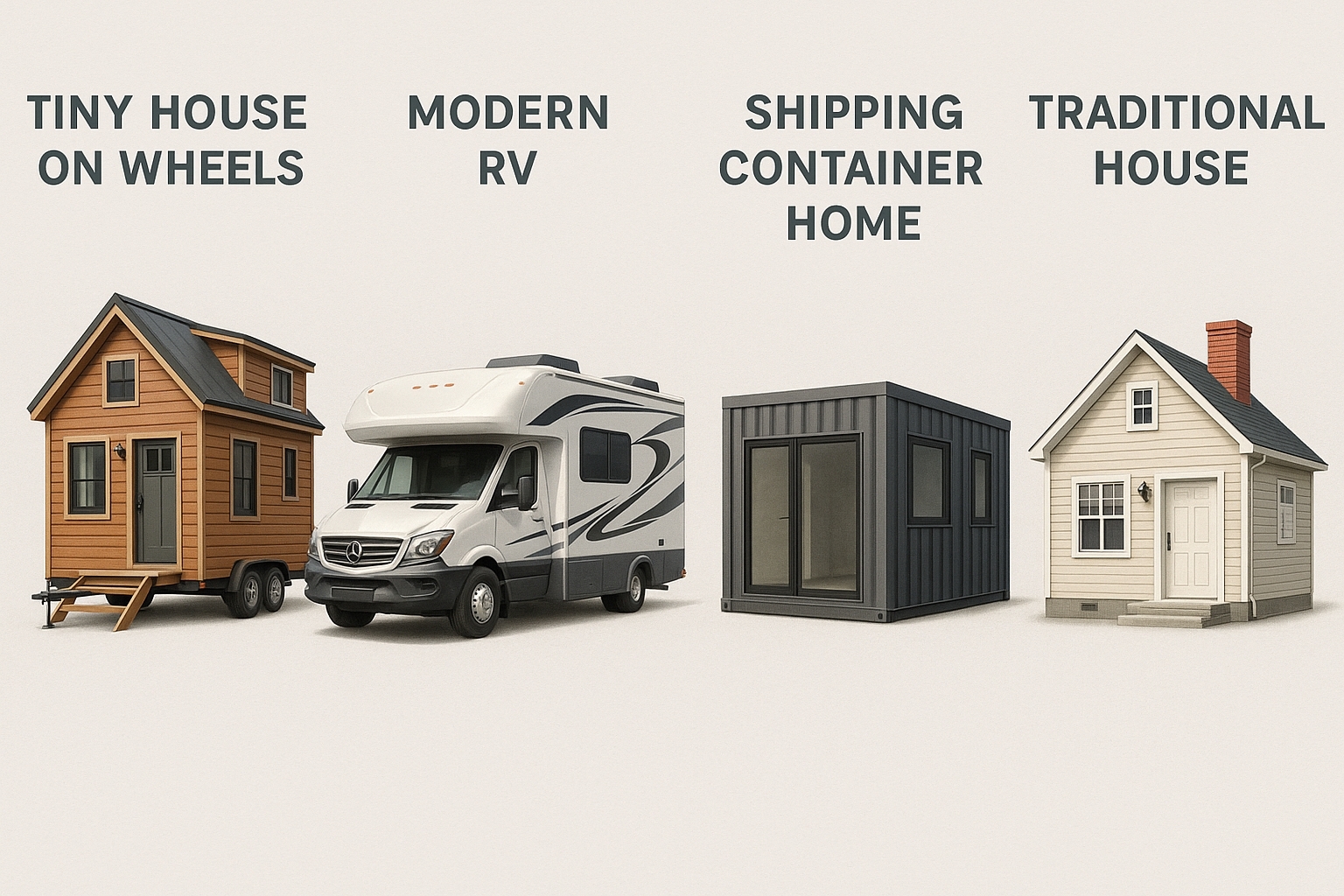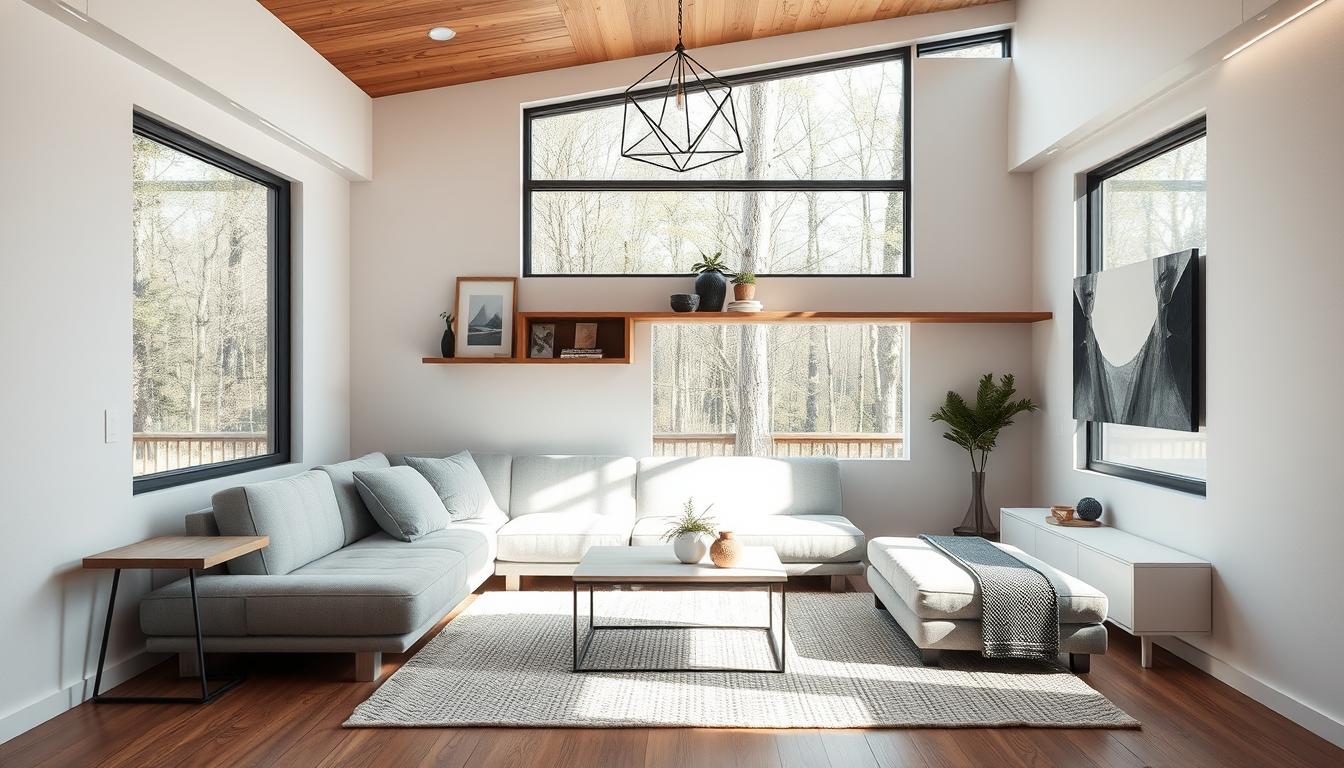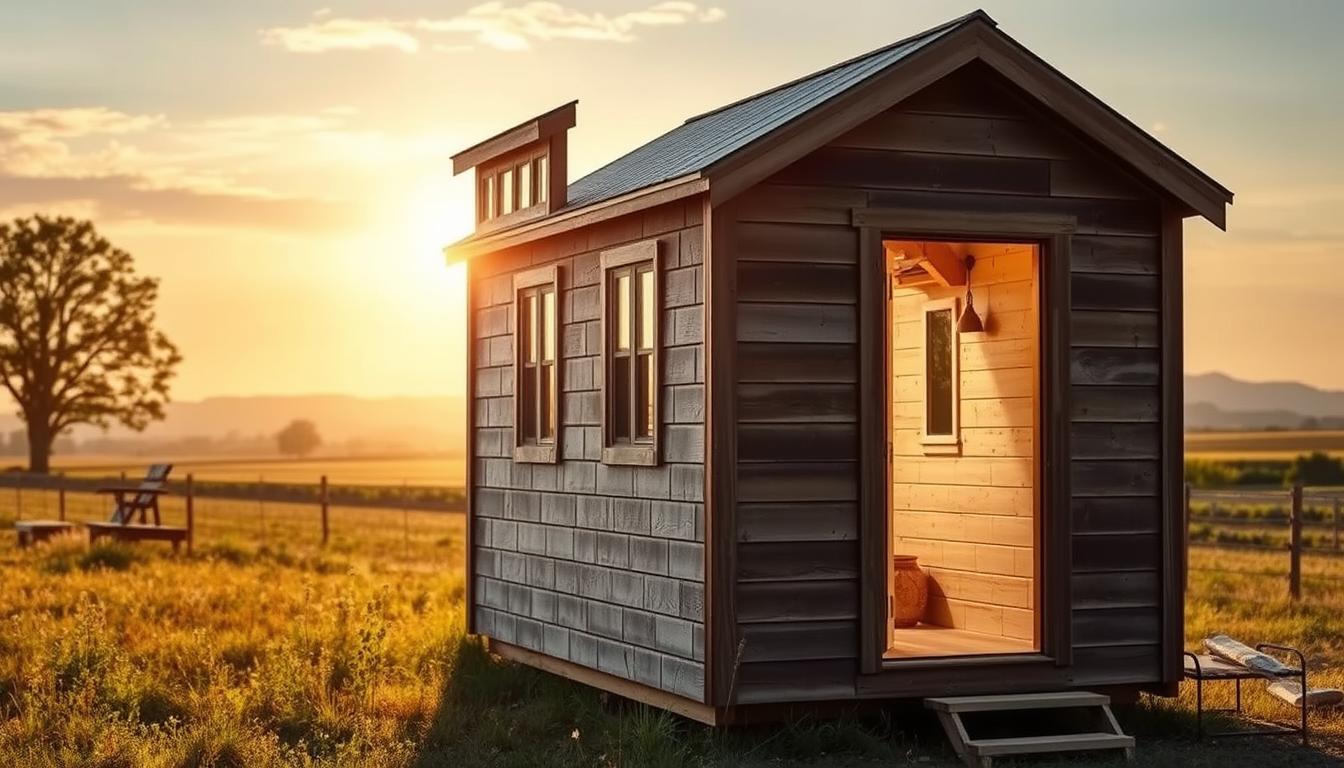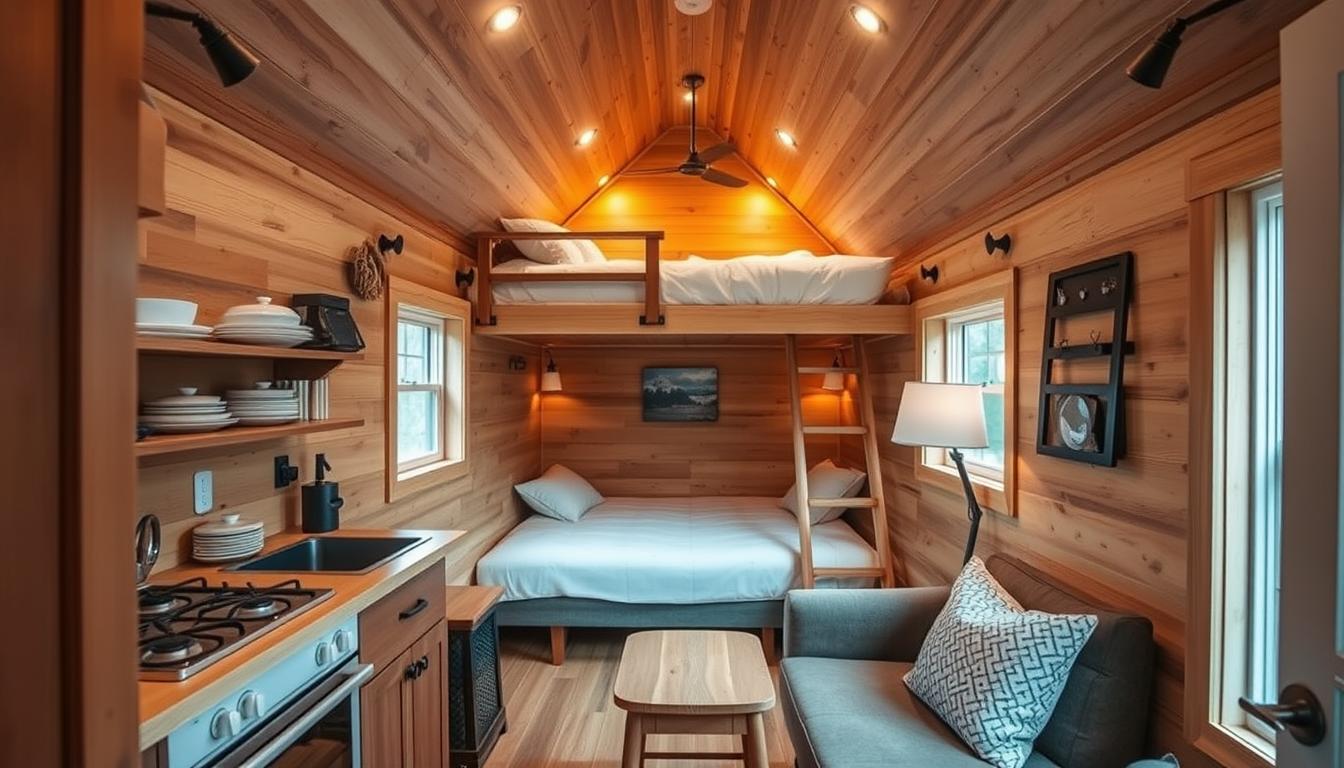Learn to Buy Tiny House Land
Discover essential steps and insights for successfully purchasing land for your tiny house.
– Understand Regulations: Learn about local zoning laws and building codes to ensure compliance before buying land for your tiny house.
– Evaluate Land Options: Identify suitable land types, including residential and agricultural options, and assess their pros and cons for tiny living.
– Navigate the Purchase: Gain practical knowledge on making offers, negotiating prices, and understanding legal aspects to facilitate a smooth land acquisition process.
Table of Contents
I. Understanding Tiny House Regulations
A. Local Zoning Laws
B. Building Codes
C. Permits Required
II. Types of Land Suitable for Tiny Houses
A. Residential Land
B. Agricultural Land
C. Rural vs. Urban
III. How to Find Land for a Tiny House
A. Online Real Estate Platforms
B. Local Listings
C. Networking
D. Working with Real Estate Agents
IV. How to Evaluate Land for a Tiny House
A. Size and Terrain
B. Access to Utilities
C. Proximity to Amenities
D. Environmental Considerations
V. Financial Considerations for Buying Land
A. Budgeting for Land Purchase
B. Financing Options
C. Understanding Property Taxes
D. Additional Costs (Insurance, Maintenance)
VI. Legal Aspects of Buying Land
A. Title Searches
B. Land Surveys
C. Easements and Rights of Way
D. Understanding Land Contracts
VII. How to Make the Purchase
A. Making an Offer
B. Negotiation Strategies
C. Closing the Deal
D. Post-Purchase Considerations
VIII. Planning for Your Tiny House
A. Design Considerations
B. Landscaping and Outdoor Space
C. Future Expansion Plans
D. Community Considerations
IX. Building or Placing Your Tiny House
A. Choosing the Right Builder
B. DIY vs. Professional Construction
C. Transporting a Tiny House
D. Setting Up Utilities
X. Integrating into the Community and Lifestyle
A. Joining Tiny House Communities
B. Sustainability Practices
C. Adapting Lifestyle Changes
D. Resources for Ongoing Support
XI. Frequently Asked Questions (FAQ)
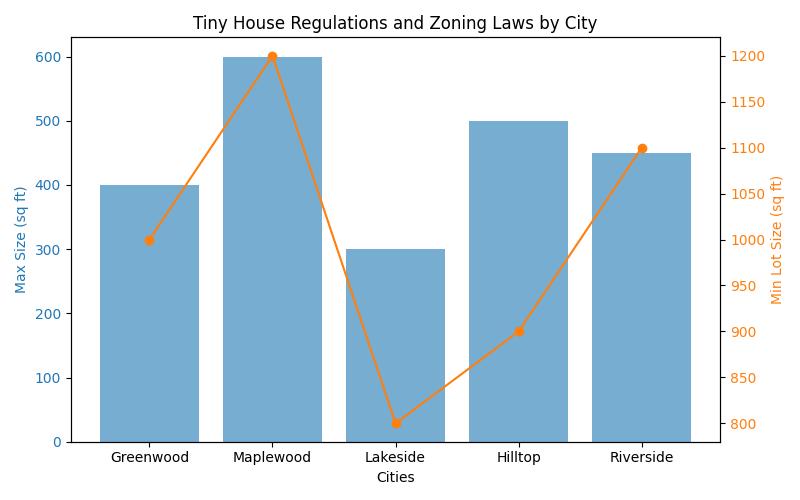
Understanding Tiny House Regulations
Local Zoning Laws
Understanding local zoning laws is crucial when exploring how to buy land for a tiny house. Zoning laws dictate what can be built where and can vary significantly from one area to another. Some towns have specific exemptions for tiny houses on wheels, while others may require them to be permanently affixed to a foundation.
Personal Experience: Jessica, a tiny house owner from Oregon, shared that she spent weeks researching her local zoning office’s regulations. “I was surprised to learn how much it varied by neighborhood. Some places were very accommodating, while others were not,” she recalled.
Before making any decisions, you should contact your local zoning office or conduct an online search to uncover the specific zoning regulations in your desired location. This research will help you avoid potential legal issues down the line and ensure that your tiny house dreams are achievable.
Building Codes
Building codes are the regulations that govern the construction of buildings. These codes ensure that structures are safe and habitable. Tiny houses often fall under different codes than traditional homes, especially if they are on wheels. Familiarizing yourself with the building codes for your area will help you understand what materials you can use, the required square footage, and other essential building requirements.
Permits Required
Before you can begin construction, youll likely need several permits. Common permits include building permits, land use permits, and possibly special permits for tiny houses. Its essential to check with local authorities to determine which permits are necessary for your project. This upfront legwork can save you time and money in the long run, preventing potential fines or the need to halt construction.
| Regulation Type | Description | Importance |
|---|---|---|
| Local Zoning Laws | Regulations that dictate what can be built where, affecting tiny house placement. | Ensures compliance and prevents legal issues when placing a tiny house. |
| Building Codes | Safety and construction standards that must be met for tiny houses, especially on wheels. | Guarantees the structural integrity and safety of the tiny house. |
| Permits Required | Necessary approvals needed for construction, including building and land use permits. | Helps avoid fines and legal complications by ensuring all required permits are obtained. |
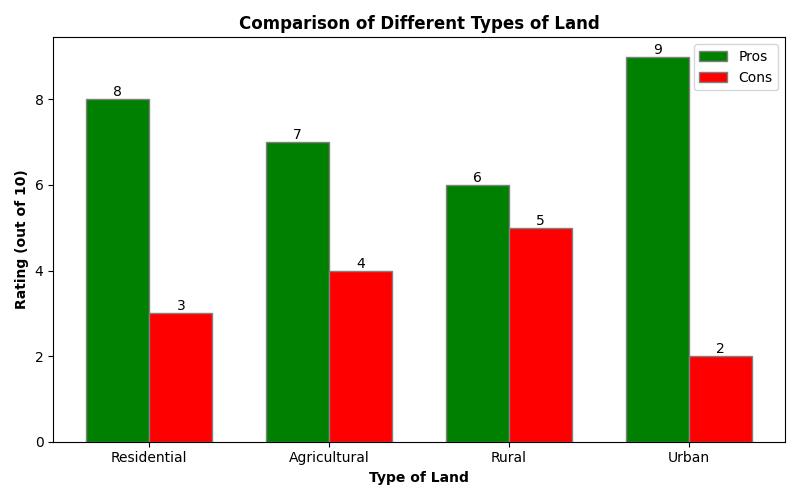
Types of Land Suitable for Tiny Houses
Residential Land
Residential land is typically zoned for housing and is often the most straightforward option for placing a tiny house. This type of land allows for the construction of traditional homes, so tiny houses usually fit within these regulations. Its important to check the specific zoning regulations for residential land in your area to ensure that tiny houses are permitted.
Agricultural Land
While primarily intended for farming, agricultural land can sometimes be a viable option for tiny house living. In some regions, zoning laws may allow for non-farming structures under specific circumstances. You might explore zoning variances or exemptions that could enable you to place a tiny home on agricultural land. However, be cautious, as regulations can be complex and may require additional documentation.
Rural vs. Urban
When considering where to buy land for a tiny house, youll need to weigh the pros and cons of rural versus urban settings.
- Rural Land: Generally more affordable, rural land offers privacy, space, and a natural environment. However, it may lack access to amenities such as grocery stores and hospitals, and utility connections can sometimes be limited.
- Urban Land: Urban settings provide better access to amenities and services but often come with higher land prices and stricter zoning regulations. Additionally, finding a suitable plot in a bustling area can be competitive.
Ultimately, your choice will depend on your lifestyle preferences and budget.
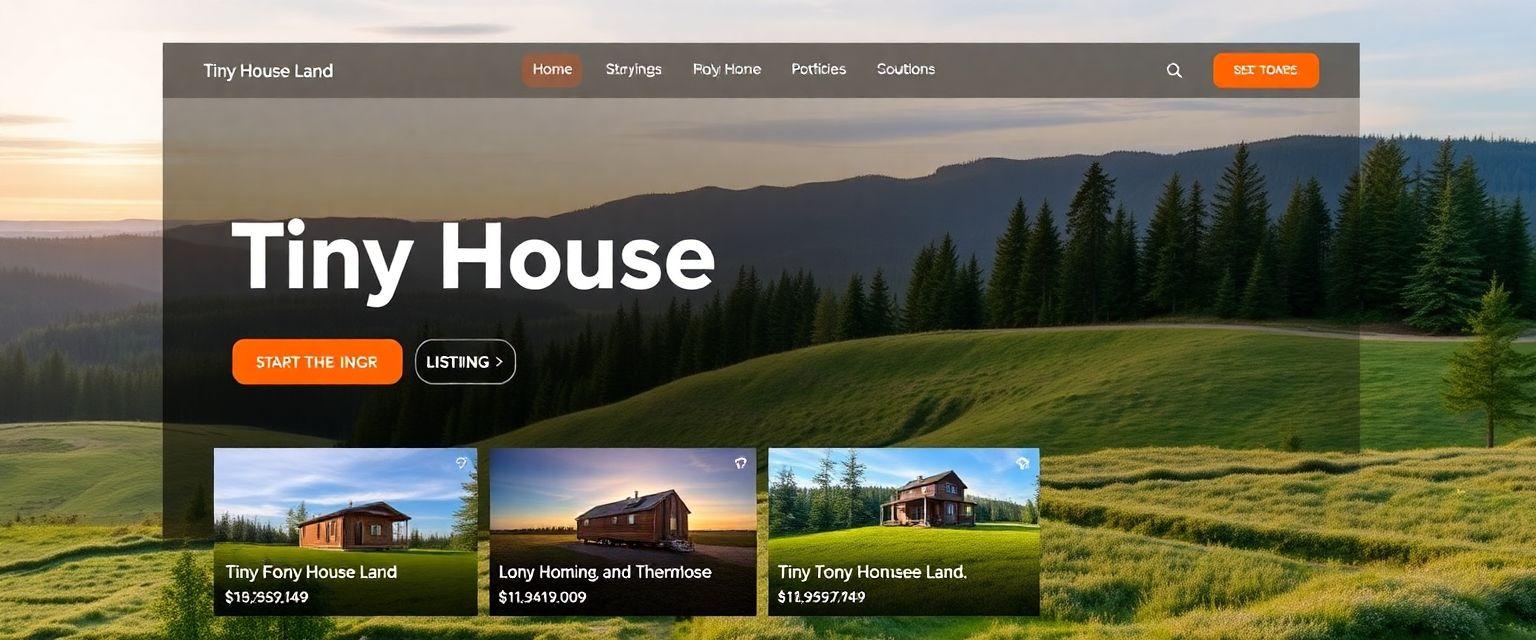
How to Find Land for a Tiny House
Online Real Estate Platforms
The internet is a valuable resource for finding land. Websites such as Zillow, Realtor.com, and specialized platforms like Tiny House Listings offer a plethora of options for potential buyers. These platforms allow you to filter your search by location, price, and land size, making it easier to find suitable plots for your tiny house.
Local Listings
Dont overlook local listings in newspapers and community bulletin boards. Often, these sources can provide leads on land that may not be advertised online. Additionally, attending local real estate events or open houses can help you discover hidden gems.
Networking
Engaging with tiny house communities can yield valuable insights and opportunities. Joining online forums, social media groups, or local meetups can help you connect with others who share your interest in tiny living. Networking can lead to word-of-mouth opportunities, such as individuals looking to sell land or collaborate on land purchases.
Working with Real Estate Agents
Finding a real estate agent who specializes in tiny house land can streamline the process. An experienced agent will be familiar with local zoning laws and can help you navigate the complexities of your purchase. Dont hesitate to ask for referrals or do your research to find an agent who understands your vision.
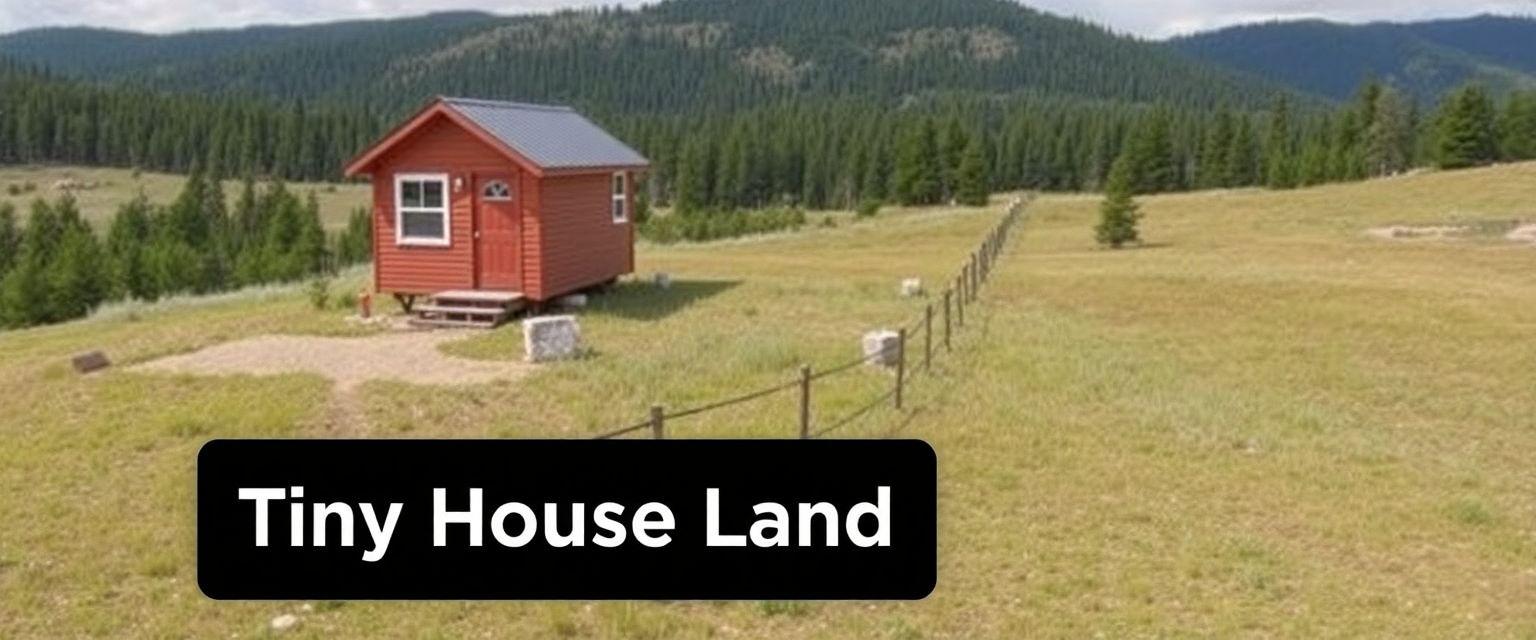
How to Evaluate Land for a Tiny House
Size and Terrain
When evaluating land, the size and terrain are crucial factors. Assess whether the land is large enough to accommodate your tiny house and any additional features you desire, such as gardens or outdoor spaces. Additionally, consider the terrain; flat land is generally easier to build on compared to hilly or rocky areas.
Access to Utilities
Access to utilities is another critical consideration. Ensure that the land has reliable access to water, electricity, and sewage systems. If these utilities are not readily available, youll need to assess the costs and logistics of connecting them to your tiny house.
Proximity to Amenities
Living near grocery stores, hospitals, and recreational areas can significantly enhance your tiny house experience. Evaluate the proximity to amenities to ensure you have easy access to the essentials. Being close to a community can also foster connections and social interactions.
Environmental Considerations
Before finalizing your land purchase, consider any environmental factors that may affect your living situation. Check for flood zones, wildlife protections, and local regulations regarding land use. This information will help ensure that your tiny house is safe and compliant with environmental protections.
Financial Considerations for Buying Land
Budgeting for Land Purchase
Effective budgeting is essential when looking to buy land for a tiny house. Determine your overall financial situation, including how much you can afford for a down payment and the total cost of the land. Be sure to include additional expenses like closing costs and potential renovations.
Financing Options
There are various financing options available for purchasing land. Traditional mortgages may not be an option for vacant land, so consider alternatives like land loans or personal loans. Research lenders who specialize in these types of loans to find the best rates and terms.
Understanding Property Taxes
Property taxes can vary significantly based on location and land use. Its essential to understand the property tax implications in your chosen area. Research the average property tax rates to factor these ongoing costs into your budget.
Additional Costs (Insurance, Maintenance)
In addition to the purchase price and property taxes, youll need to account for other costs such as insurance and property maintenance. Building a tiny house often requires homeowners insurance, and ongoing maintenance can include landscaping, utility bills, and unexpected repairs.
Personal Journey: Finding the Perfect Land for My Tiny House
Discovering My Dream Location
My journey toward tiny house living began when I stumbled upon a blog about sustainable living. Inspired, I decided to downsize my life and build a tiny house. However, the first challenge was finding the right piece of land. I vividly remember the day I drove out to a small rural area in Oregon, with the intention of exploring a few listings I had found online.
The Search Begins
As I navigated the winding country roads, I felt a mix of excitement and anxiety. I had my heart set on a secluded plot near a river, but I knew I had to consider more than just aesthetics. Upon arriving, I quickly realized that the terrain was uneven, and there was limited access to utilities. It was disheartening, but I was determined to find a better fit.
A Valuable Connection
After a few weeks of searching, I attended a local tiny house community meetup. There, I met Sarah, an experienced tiny house builder, who shared her insights on land hunting. She emphasized the importance of understanding local zoning laws and connecting with real estate agents who specialized in tiny homes. This advice proved invaluable.
The Right Fit
Eventually, I found a beautiful 1-acre lot that met all my criteria: it was flat, permitted for tiny houses, and had access to water and electricity. The nearby community was welcoming, with plenty of amenities. The moment I stood on that land, I knew it was where I wanted to build my future.
Conclusion
Reflecting on my experience, I realized that finding the right land was not just about location but also about connecting with the community and understanding the regulations. My journey taught me that patience and networking are key to making the dream of tiny house living a reality.
Legal Aspects of Buying Land
Title Searches
Conducting a title search is crucial to ensure there are no existing liens or claims against the property. This process involves reviewing public records to verify ownership and assess any potential legal issues. A clear title is essential for a smooth transaction.
Land Surveys
A professional land survey can clarify property boundaries and help prevent future disputes. This step is particularly important when purchasing land, as it will confirm that you are buying the correct plot without encroachments from neighbors.
Easements and Rights of Way
Understanding easements and rights of way is vital when considering land for a tiny house. An easement grants others the right to use a portion of your property for a specific purpose, such as utility access. Knowing these details can impact how you plan to use your land.
Understanding Land Contracts
A land contract is an agreement between the buyer and seller that outlines the terms of the sale. Familiarize yourself with the contract language and ensure you understand all terms and conditions before signing. Consulting with a real estate attorney can provide additional assurance.
How to Make the Purchase
Making an Offer
When you find the right piece of land, its time to make an offer. Start by researching comparable land sales in the area to ensure your offer is competitive. Your real estate agent can help you craft a compelling offer that reflects the current market conditions.
Negotiation Strategies
Negotiating the price can be one of the most critical steps in land purchasing. Consider strategies such as starting with a lower offer or including contingencies that protect you if issues arise during inspections. Be prepared to negotiate to reach a mutually beneficial agreement.
Closing the Deal
The closing process involves finalizing the sale and transferring ownership of the land. This step typically includes signing legal documents, paying closing costs, and possibly obtaining title insurance. Ensure you understand all documents and financial obligations before signing.
Post-Purchase Considerations
After the purchase, youll need to set up utilities and prepare for construction. This may include applying for necessary permits, hiring contractors, and planning your tiny house layout. Taking these steps early on will ensure a smoother transition into your new home.
Planning for Your Tiny House
Design Considerations
Your lands characteristics can significantly influence your tiny house design. Consider factors like orientation, sunlight, and access when planning your layout. This careful planning will maximize space and enhance energy efficiency.
Landscaping and Outdoor Space
Utilizing outdoor space effectively can enhance your tiny house living experience. Consider incorporating gardens, outdoor seating, or fire pits to create a welcoming environment. Thoughtful landscaping can also improve aesthetics and increase property value.
Future Expansion Plans
As your needs change, you may want to expand your living space. When buying land, consider whether it can accommodate future expansion, whether that means adding another tiny house for family or constructing additional storage.
Community Considerations
Choosing land in a community that aligns with your lifestyle values is vital. Research neighborhoods or tiny house communities to find environments that promote shared values, sustainability, and community engagement.
Building or Placing Your Tiny House
Choosing the Right Builder
Selecting a builder experienced in tiny houses is crucial for a successful construction project. Look for builders with a strong portfolio and positive reviews. Meeting with potential builders can help you gauge their expertise and compatibility with your vision.
DIY vs. Professional Construction
Deciding between DIY and professional construction can significantly impact your budget and timeline. While building your own tiny house can save money, it requires significant skills and time. Conversely, hiring a professional can ensure quality but may come at a higher price.
Transporting a Tiny House
If youre purchasing a movable tiny house, youll need to consider the logistics of transportation. Ensure you have the necessary permits for moving your tiny house and understand the best routes for transportation. This planning can prevent unexpected delays and costs.
Setting Up Utilities
Setting up utilities is essential for making your tiny house livable. This process may include connecting to local water, electricity, and sewage systems or opting for off-grid systems like solar power or composting toilets. Research local utility companies and installation costs to best plan your setup.
Integrating into the Community and Lifestyle
Joining Tiny House Communities
Becoming part of tiny house communities can provide invaluable support and resources. These communities often share tips, experiences, and even collaborate on land purchases. Engaging with like-minded individuals fosters connections and strengthens your tiny living experience.
Sustainability Practices
Integrating sustainable practices into your tiny house lifestyle can enhance your environmental impact. Explore options for composting, rainwater collection, and solar power to create an eco-friendly living environment.
Adapting Lifestyle Changes
Transitioning to tiny house living requires adapting to new lifestyle changes. Embrace minimalism, prioritize experiences over possessions, and focus on sustainable living. This shift can lead to a more fulfilling and intentional way of life.
Resources for Ongoing Support
To ensure success in your tiny house journey, consider utilizing various resources for ongoing education and support. Websites, forums, and local workshops can provide valuable information and community connections as you navigate your new lifestyle.
Frequently Asked Questions (FAQ)
Q1: Can I buy land for a tiny house if its on wheels?
Yes, you can buy land for a tiny house on wheels, but you must ensure that the local zoning laws permit it. Some areas have specific regulations for mobile tiny homes.
Q2: What are the average costs associated with buying land?
Costs can vary widely depending on location and land size. Typically, buyers should consider the purchase price, property taxes, insurance, and any necessary improvements to the land.
Q3: Are tiny houses allowed in urban areas?
Many urban areas have strict zoning laws regarding tiny houses. However, some cities are becoming more accommodating. Its essential to research local regulations to determine what is possible.
Q4: How can I find a supportive tiny house community?
You can find supportive tiny house communities through online forums, social media groups, or local meetups. Engaging with these groups can provide valuable insights and resources.
Q5: What should I do if my land doesnt have access to utilities?
If your land lacks access to utilities, consider off-grid solutions such as solar panels for electricity, rainwater collection systems, and composting toilets to make your tiny house livable.
Conclusion
Embarking on the journey of buying land for a tiny house is an exhilarating experience, brimming with both opportunities and challenges. By familiarizing yourself with regulations, exploring various land options, and carefully weighing financial and legal considerations, you can confidently navigate this process. With the right knowledge and resources at your disposal, your dream of tiny house living is well within reach.
We encourage you to explore the endless possibilities that await you, connect with like-minded individuals in your community, and fully embrace the simplicity that tiny living offers. Your adventure starts now, so dive in and let your tiny house dreams come to life!
And dont forget to check out our other content for tips, inspiration, and resources to support your tiny living journey!
Additional Resources:
– Local Zoning Offices
– Tiny House Communities
– Legal Resources for Tiny Homes
– Real Estate Professionals Specializing in Tiny Houses
The author is a seasoned real estate consultant and tiny house advocate with over a decade of experience in the housing sector. Holding a Master’s degree in Urban Planning from the Massachusetts Institute of Technology, they have collaborated with numerous local governments to shape zoning laws beneficial for tiny house living. Their insights are backed by research published in the Journal of Housing Studies, where they analyzed the impact of tiny homes on urban density and community development.
As a certified member of the American Planning Association, the author has also led workshops on sustainable living and land acquisition strategies at various national tiny house conventions. Their practical experience includes successfully negotiating land purchases for tiny homes in diverse settings, from urban lots to rural areas. With a passion for promoting affordable housing solutions, they are dedicated to guiding others through the intricate process of purchasing land for tiny houses, ensuring a smoother path to sustainable living.





